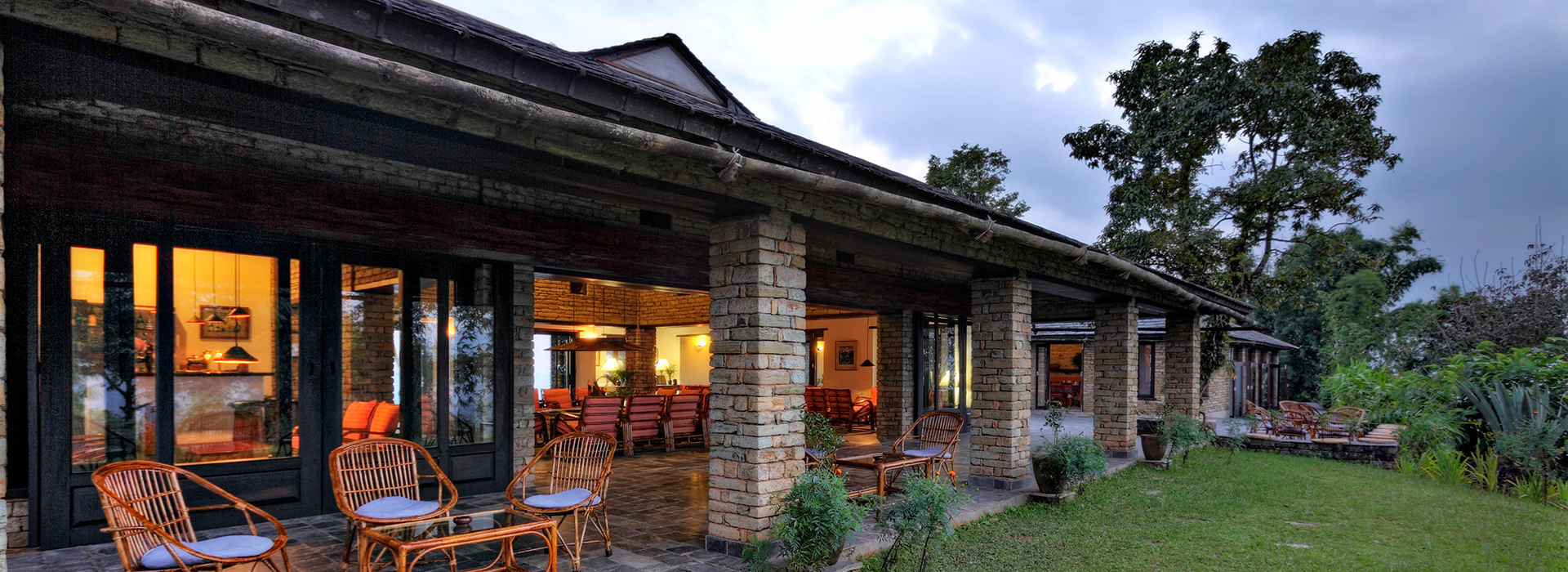Tiger Mountain Pokhara Lodge
Tiger Mountain Pokhara Lodge, Pokhara, Nepal
Nestled in the Himalayas, the Tiger Mountain Pokhara Lodge in Nepal offers a peaceful sanctuary.
As you ascend from Pokhara town, the landscape transforms from a monotonous real estate development to a preserved area, free from uncontrolled grazing and deforestation. The Tiger Mountain Pokhara Lodge is located on a ridge that runs from east to west, offering breathtaking views of the mountains and the Pokhara Valley. The southern part of the ridge is home to several sparsely populated villages that have been cultivating crops such as maize, rice, mustard, millets, and vegetables for over 200 years. Meanwhile, the northern part is well-wooded and includes a community forest.
Since its inception in 1998, the Tiger Mountain Pokhara Lodge has set high standards in sustainable hospitality and community-inclusive tourism. Numerous awards and accolades over the years attest to its exemplary approach. Under the private entrepreneurship of Marcus and Lisa, the lodge continues to operate as an independent, nature-based mountain lodge, driven by their energy and passion for sustainable tourism.
Who is hosting?
Thanks to Marcus Cotton's conservation background and vision for sustainability, the Tiger Mountain Pokhara Lodge has become a prime example of how to operate a responsible and environmentally-conscious hotel. Every aspect of the lodge has been carefully considered and managed according to his sustainability ethos, making it a shining model for others to follow.
Aesthetics&Philosophy
Established in 1998, the Tiger Mountain Pokhara Lodge is a shining example of sustainable hospitality and community-inclusive tourism. Unlike the crowded lake-side hotels of Pokhara town, this nature-based mountain lodge operates under the passionate and energetic leadership of Marcus and Lisa. The main lodge, located atop the ridge, features a dining room, library, bar, and comfortable sitting areas. The hillside cottages offer stunning mountain views and are constructed using mud-plastered limestone bricks with slated tiled roofs, in harmony with the surrounding gardens and thriving woodlands.
The lodge's short pebbled driveway serves as a parking space and landing area for arrivals and departures. It leads up some steps past several cottages, which are easily accessible for older guests without compromising on views. Further up the incline, you'll find carefully placed stepping stones that lead to the main lodge. At the top of the stairs, a brief open hallway opens out to a courtyard with stunning views of the valley below and the Himalayan skyline beyond. The hallway connects two identical stone and slate buildings, a sustainable and locally-appropriate architectural style.
The building to the right features spacious seating areas, a bar, and a library, while the building to the left houses the dining room and a smaller covered area for buffet lunches, which is easily accessible from the courtyard. Both rooms open out through large French windows to a veranda under the roof and an outdoor lawn, creating a convivial space for alfresco meals, cocktails, and conversation.
Accommodation
The Eighteen cottages of Tiger Mountain Pokhara Lodge are positioned along the ridge, offering breathtaking mountain views. The lodge's architecture is consistent with the local village homes, made of mud plastered limestone bricks and slated tiled roofs. The cottages mostly consist of two rooms, each with a sitting area, a bedroom, and a modern bathroom.
The rooms are equipped with small but significant details such as flip-flops, dressing gowns, umbrellas, torch lights, and oil heaters for winter, ensuring guest comfort. Other amenities include a bedside flask with purified water, books, board games, and special toiletries. The four-poster beds with a net curtain, reading lamps, and a tea service, along with fresh flowers and rugs by the bed, give the rooms a warm and inviting feel.
When dining at the lodge, guests can enjoy the stunning mountain views while indulging in Chef Lalu Mahato's delicacies. During winter afternoons, guests can bask in the sun with their drink in hand. The meals are served traditionally, like in Nepalese homes, comprising of lentils, vegetables, curries, rice, and flatbread on a traditional bronze platter.
For dinner, guests can opt for a multi-course meal with seasonal vegetarian curries, inspired meat dishes, and delectable puddings. Alternatively, they may choose a Nepali Thali. The dining room is perfect for guests who prefer indoor seating, especially on cold winter nights when the central fireplace crackles. The lodge is always happy to accommodate special dietary requests and children's favorites.
Experiences
To fully experience and appreciate the surroundings and amenities of Tiger Mountain Pokhara Lodge, it is recommended that guests stay for at least three to four nights. For trekkers heading to the Himalayas, the lodge serves as a luxurious retreat after a demanding trek, where guests can indulge in recuperative massages and private yoga sessions led by skilled instructors. The lodge also offers various guided walks to explore the local culture, flora, and fauna, as well as nearby attractions such as Pokhara and the Phewa Lake. Tiger Mountain Pokhara Lodge is an ideal destination for families, nature enthusiasts, and those looking for a peaceful retreat to explore the trekking routes. The lodge is closed from mid-June to mid-September.
Conscious Travel
Tiger Mountain Pokhara Lodge is a responsible conservation-driven hotel that follows sustainable tourism practices, with a focus on minimal impact on the natural environment, waste management, community engagement, and wildlife and nature conservation. The lodge sources food locally, uses natural cane furniture and local artifacts for interior aesthetics, and offers local activities such as village walks. They have an annual grant program for the local school and forestry committee, and provide mentorship to local teachers. The lodge is independently verified on responsible practices and has an all-staff forum to discuss sustainable actions and monitor results.







